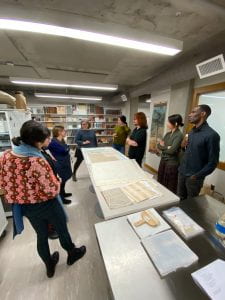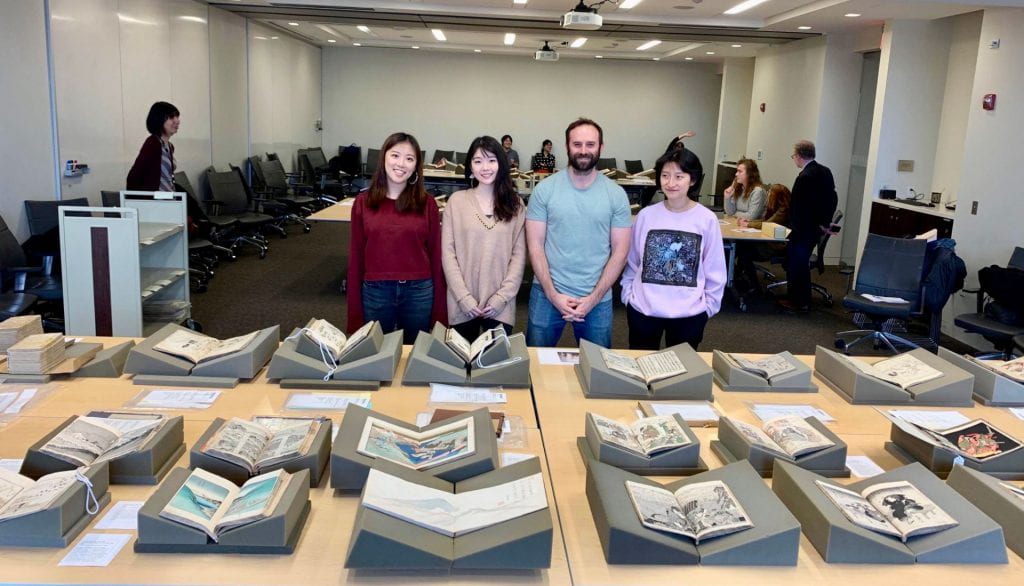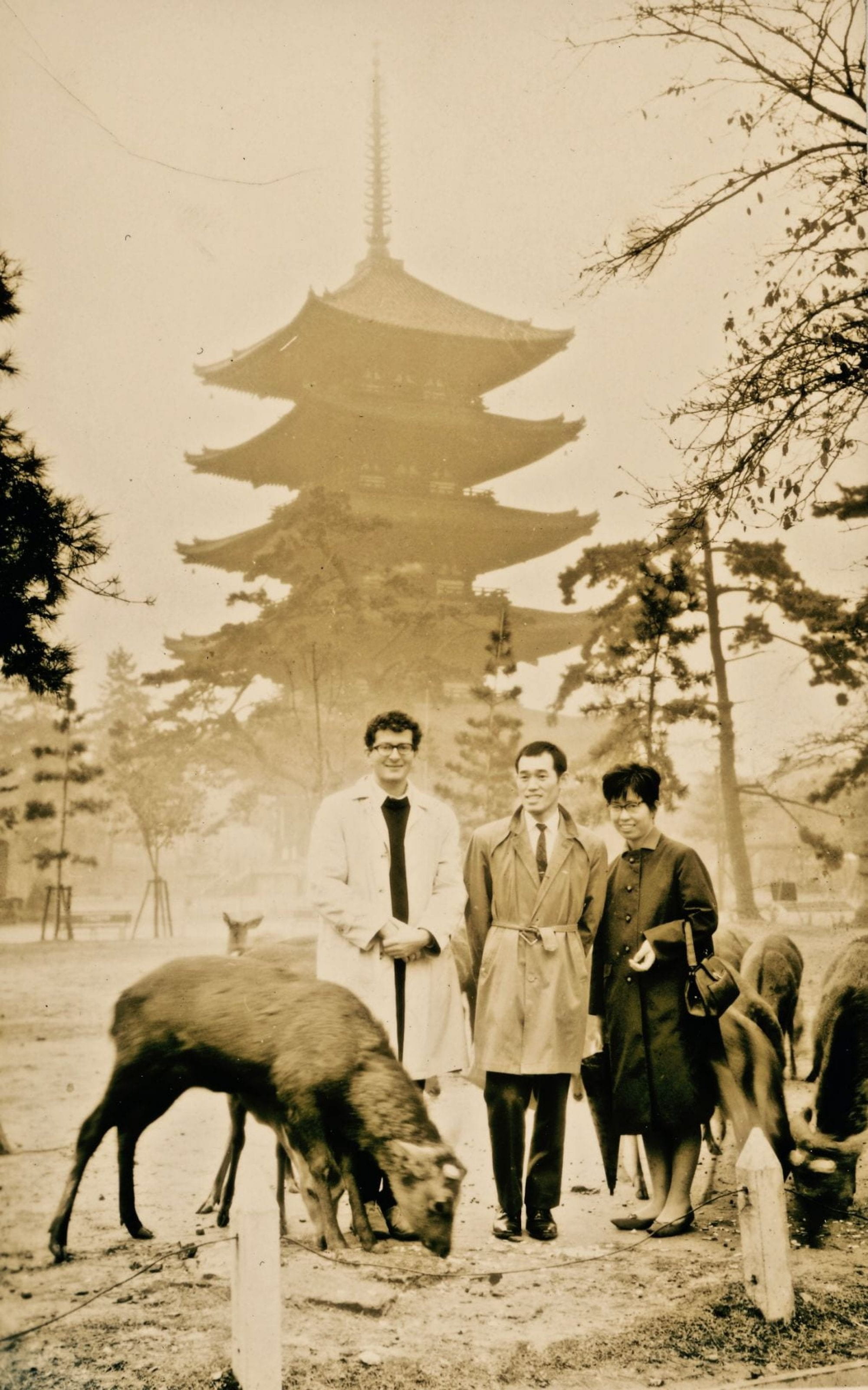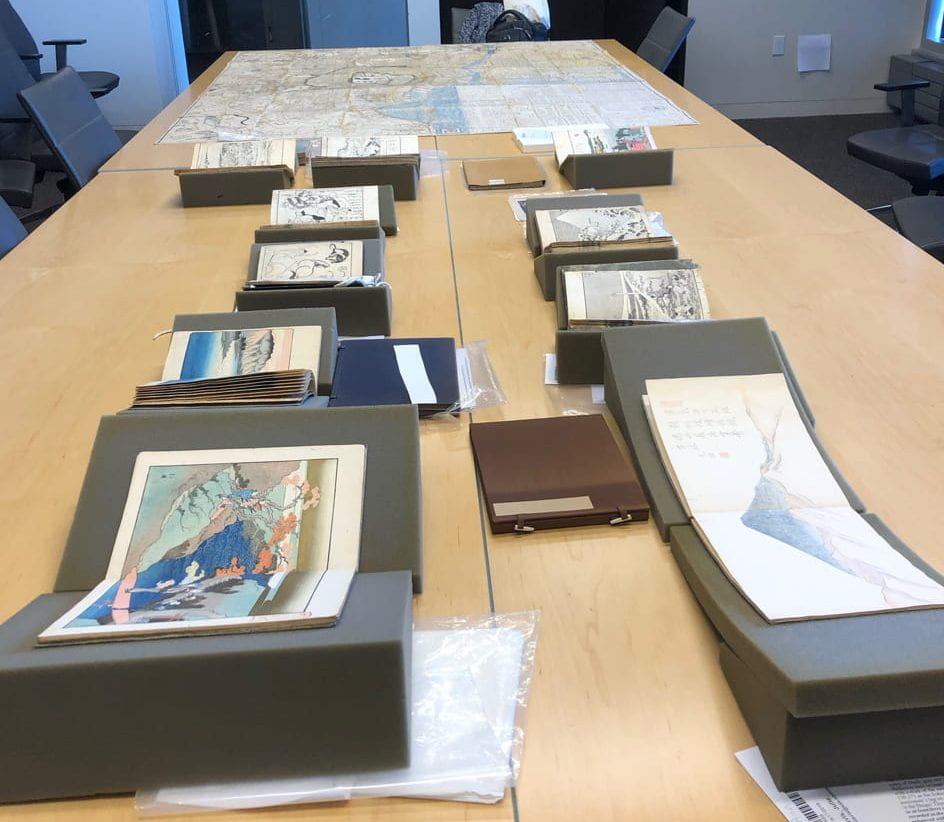The Tress Collection Seminar, 2019-2020: A Retrospective
This June marks the second anniversary for the Tress Collection of Japanese illustrated books and manuscripts at the University of Pennsylvania. Donated by acclaimed American photographer Arthur Tress (b. 1940) to Penn Libraries in June of 2018, the collection includes over 1,400 titles dating from the 17th century to the 1940s . The works in the collection are diverse, with books on etiquette, design, calligraphy, literature, history, foreign countries, nature, eroticism, Kabuki and Noh theater, and more. Taken together, the collection presents a remarkable portrait of the literary and artistic cultures of Japan from the Edo Period (1600-1868) to the early Showa era (1925-1989), a period spanning enormous artistic, cultural, political and economic changes.
Over the last year, students from across the university have been making close studies of selected books in seminars taught by Dr. Julie Nelson Davis during the Fall semester of 2019 and the Spring of 2020. Professor Davis is Professor of Japanese art in the Department of the History of Art at Penn and Director of the Penn Forum on Japan. Recognized as one of the world’s foremost authorities on Japanese prints and illustrated books, Dr. Davis is currently working with the Kislak Center for Special Collections, Rare Books and Manuscripts to prepare an exhibition of Japanese illustrated books currently scheduled for Spring 2021. Since last fall, she has been working with students at levels from departments and institutions across Penn in seminars to research the collection and prepare it for exhibition. Students in the seminars have ranged from undergraduate to graduate to university staff, and have come from departments including History of Art, Education, East Asian Languages and Civilizations, and Liberal & Professional Studies among others. During the seminars, students engaged various aspects of Japanese history, art, print cultures, and bookmaking techniques through hands-on encounters with materials from the Tress collection. They also researched individual works in the collection for adopt-a-book projects, built a website, and selected items for display. Each seminar culminated with student proposals for case designs on historical and aesthetic themes for inclusion in the final exhibition.

The seminars were structured non-consecutively, allowing students to enter the class for one or both semesters. According to Professor Davis, this flexibility helped to foster new conversations about the collection and raised different questions, with students in both seminars helping develop the exhibition in new ways. Catherine Gonterak, the current art director of the Pennsylvania Gazette, the University of Pennsylvania’s alumni magazine, was enrolled for both semesters and said she enjoyed the “greater cumulative effect,” of doing so. During the Fall semester, her adopt-a-books included Torii Kiyomitsu I’s Maihime nidai hachinoki (1774) and Kamisaka Sekka’s Cho senshu (One Thousand Butterflies, 1904). During the Spring semester, she focused more broadly on books on design (zuan) and art guides, drawing on the knowledge she built on the previous semester. She hopes to continue studying and researching Japanese art in the future, and is interested in topics such as the relationship between ukiyo-e paintings and poetic traditions, and how the two have influenced one another.
For some students, such as Nicholas Purgett, a PhD student in the Department of Art History studying medieval European art, the seminar presented a chance to study an entirely new field. During the Spring semester, Nicholas’s adopt-a-books included a kimono pattern book from the eighteenth century and a German adaptation of a Japanese epic poem from the nineteenth century. In the latter case, his knowledge of German helped him to analyze the book as an example of intercultural translation between two then-unfamiliar cultures. He said that he enjoyed the diversity of backgrounds in the classroom, and seeing how others engaged with the materials in the collection helped him to deepen his perspective.
For Yuqi Zhao, an MS student in Integrated Product Design who enrolled in both semesters, the seminars offered an invaluable chance to study how handwriting was reproduced in print in materials from hundreds of years ago, an experience she found moving. Her adopt-a-book projects have focused on texts and traditional culture, including the Nyohitsu kasugano shita, a guide to writing calligraphy for women, and the Enshoku shinasadame, a series of erotic prints by the famed artist Kunisada. One of the most exciting experiences of the class occurred while she was researching the Nyohitsu kasugano shita and discovered its rarity: “I could not find any information about our version [of the book] in English sites so I went to scrape the Japanese database. I found it in a Nara women’s college library catalog, but it said that there aren’t copies of this book known to exist, which means ours is potentially the only copy in the entire world!” Echoing the sentiments of Mr. Tress, who has followed the exhibition process, Yuqi says that the works in the collection “are spiritual objects that connect great artists in the past to us, passing on the passion from hundreds of years ago to us today.”

During the Spring semester, however, the seminar encountered unexpected difficulties. The 2020 COVID-19 pandemic and crisis, which has had a deep impact on the entire world in still unknowable ways, also disrupted the class since we were no longer able to meet in person after mid-March. The pandemic forced many students to leave Philadelphia for other cities, states and countries, and as a result of Penn Libraries’ closure, faculty and staff were no longer able to access the collection. Fortunately, Professor Davis was able to transition the class online, working with students to replicate many of the features of the class through the digital media available, and students further benefited from Zoom conversations with guests. As the class plans to include many of Tress’s photographs, the group spoke with Dr. Jonathan Katz about Mr. Tress’s work as a photographer. But even better, the students spoke with Mr. Tress himself during the latter half of the semester, presenting their research on selected books. Students also presented their proposals for case designs and close analyses of selected topics online during the final classes.

For now, the Tress exhibition remains on schedule, and Professor Davis is moving forward with plans for that occasion. For Davis, the exhibition offers an opportunity to “build a bigger story about both our collector and the world of the Japanese book.” A third seminar is slated for fall semester, 2020, in the coming academic year, when students will assist in final designs and refine the collection’s online presence. Davis and library curators, John Pollack and Lynne Farrington, see this as the first of several exhibitions of the Tress collection, as well as for more object-based seminars with students from across Penn. Mr. Tress has made it possible for students, curators, and faculty to learn from the collection, to make possible this in-depth study of Japanese art and history and for more interdisciplinary projects for years to come.




